
A growing number of early warning systems is available to disaster managers in Asia and the Pacific. Early warning systems vary in geographic and thematic coverage, and they offer different levels of situational awareness, alerting and executive decision-making support to national Governments and their partners. The regional and international early warning systems listed here are in addition to the mechanisms operated by national meteorological agencies and other Government entities in the region, including NDMOs.
Joint Typhoon Warning Center (JTWC) provides weather advisories and tropical cyclone alerts for the Indian Ocean and the Pacific. It can be accessed through www.metoc.navy.mil/jtwc/jtwc.html
Fiji Meteorological Service offers weather forecasting and tropical cyclone warning services on a regional scale to countries across the South Pacific in addition to forecasting for Fiji. It can be accessed through www.met.gov.fj
Emergency Managers Weather Information Network (EmWIN) offers severe weather information through a suite of data-access methods (radio, internet, satellite) and live stream alerts. It can be accessed through www.nws.noaa.gov/emwin
Japan Meteorological Agency (JMA) monitors extreme natural phenomena such as earthquakes, tsunamis, typhoons and heavy rains for Japan and neighbouring countries. It can be accessed through www.jma.go.jp/jma
Australian Bureau of Meteorology provides weather advisories and tropical cyclone alerts for Australia and neighbouring countries. It can be accessed through www.bom.gov.au
Regional Integrated Multi-Hazard Early Warning System (RIMES) provides regional early warning services and builds the capacity of its Member States in the end-to-end early warning of tsunami and hydro-meteorological hazards.
It can be accessed through www.rimes.int
ASEAN Disaster Monitoring and Response System (DMRS) integrates data and information from numerous sources, including national and international hazard monitoring and disaster warning agencies, into a single platform. The DMRS can issue alerts of potential disaster and significant impacts from multiple hazards in the region. It reports imminent hazards, incidents of disaster occurrence and updates on disaster parameters. AHA Centre Flash Alerts are generated from the DMRS. All ASEAN Member States’ NDMOs have access to monitor and contribute to the DMRS.
It can be accessed through dmrs.ahacentre.org/dmrs/
DisasterAWARE provides multi-hazard monitoring, alerting, decision support, and risk intelligence tools for disaster management agencies and I/NGOs around the globe. DisasterAWARE is fully customizable—powering the regional and national warning systems at the ASEAN AHA Centre, Indonesia’s BNPB, Viet Nam’s VNDMA, and Thailand’s NDWC. It can be accessed through disasteralert.pdc.org/disasteralert/
US Geological Survey (USGS) provides information on global ecosystems and environments, especially natural hazard warnings. USGS supports the warning responsibilities of the National Oceanic and Atmospheric Administration (NOAA) for geomagnetic storms and tsunamis. It can be accessed through www.usgs.gov
Global Disaster Alert and Coordination System (GDACS) provides alerts about global hazards and tools to facilitate response coordination. It contains preliminary disaster information and electronically calculated loss-and-impact estimations after major disasters. It can be accessed through www.gdacs.org
Automatic Disaster Analysis and Mapping (ADAM) is an automated alert system providing near real-time information on disasters to enhance immediate humanitarian response. It can be accessed through geonode.wfp.org/adam.html
Mekong River Commission Monitoring and Forecasting monitors water levels of the Mekong River and provides flash flood warnings.
It can be accessed through www.mrcmekong.org
Pacific Tsunami Warning System (PTWS) monitors seismological and tidal stations throughout the Pacific Basin to evaluate potential tsunamis triggered by earthquakes. It can be accessed through ptwc.weather.gov
Indian Ocean Tsunami Warning System (IOTWS) provides tsunami early warning to nations bordering the Indian Ocean. It consists of 25 seismographic stations and three deep- ocean sensors. It can be accessed through iotic.ioc-unesco.org